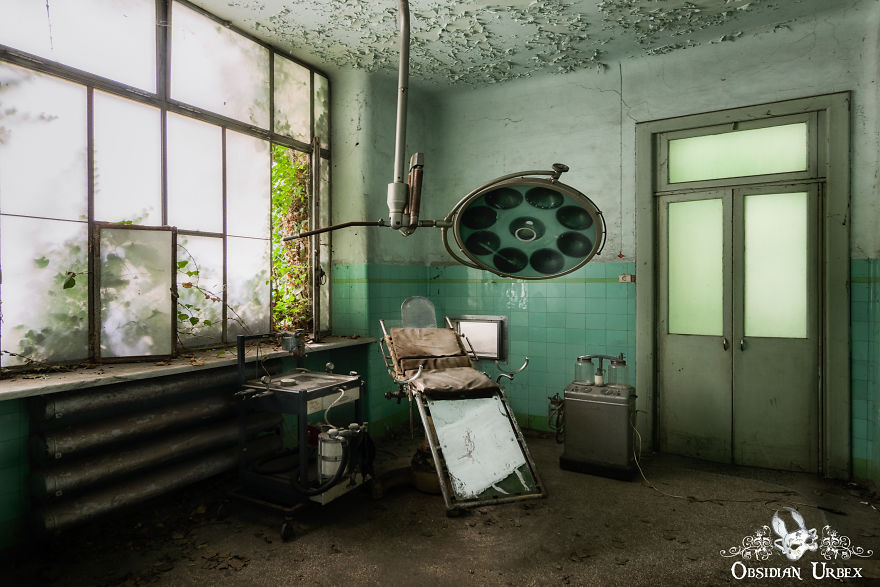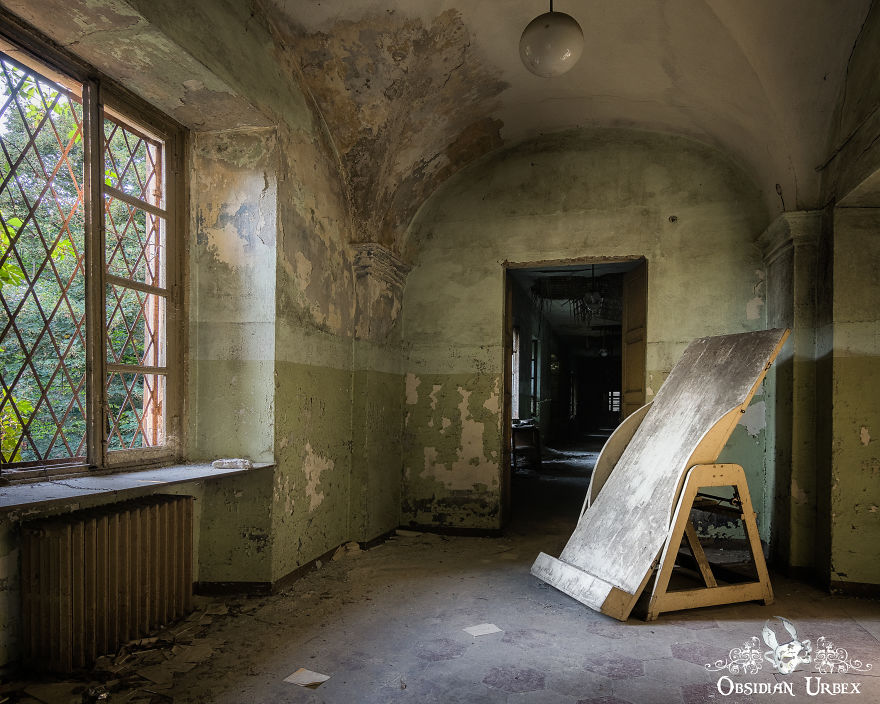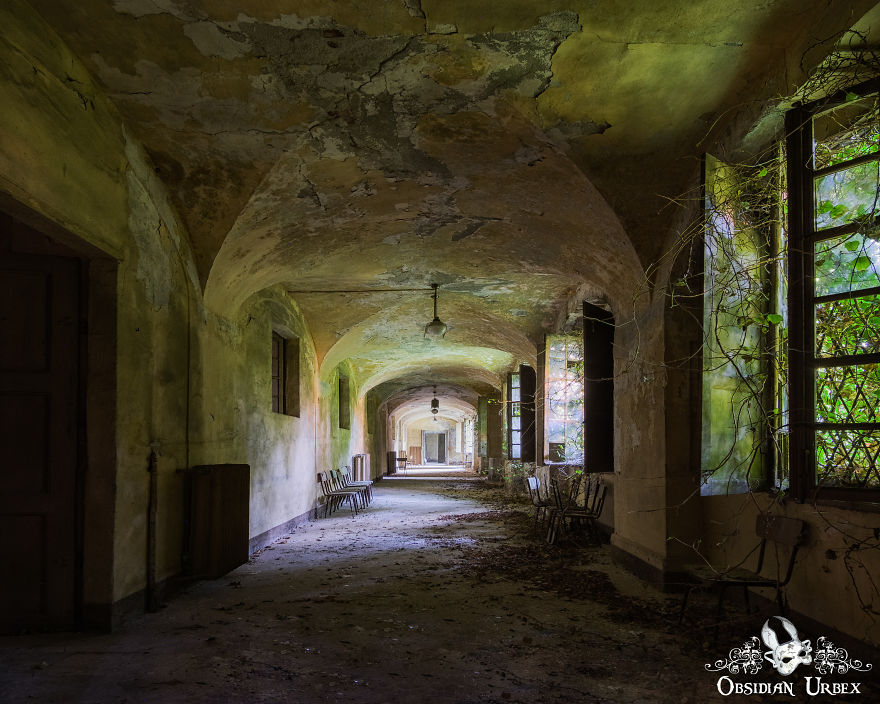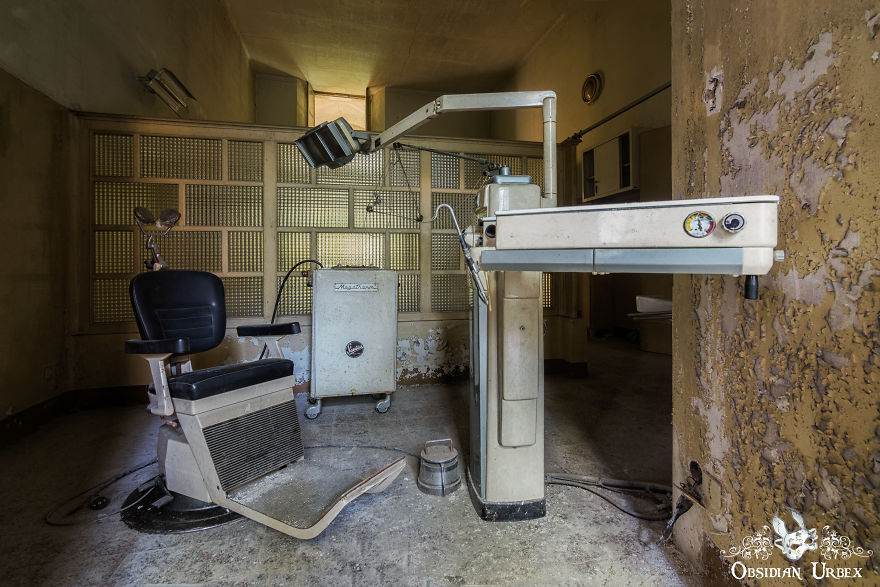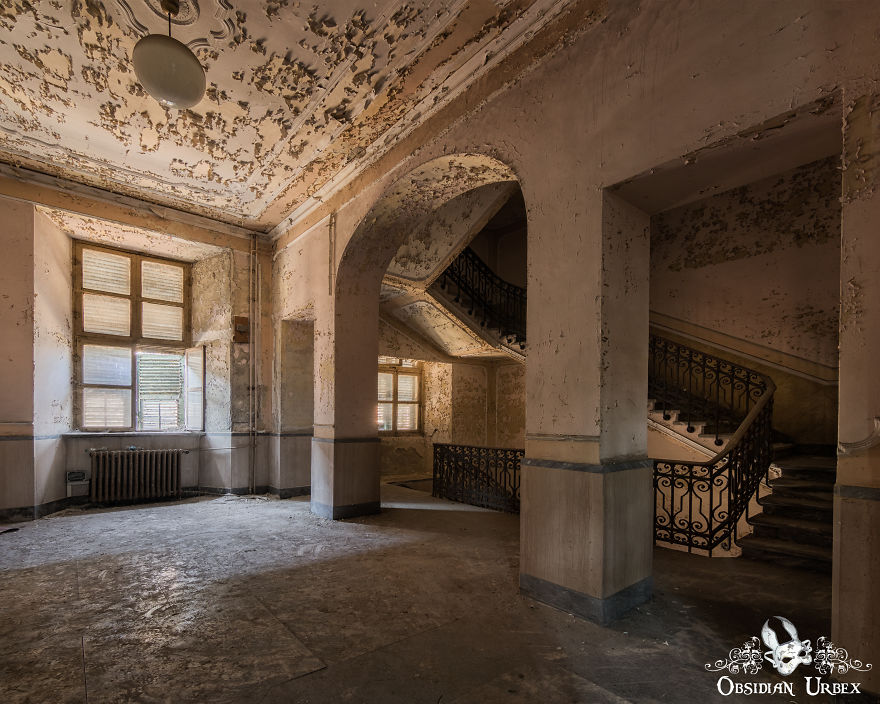14 Photographs Show How Creepy This Abandoned Mental Asylum In Italy Looks
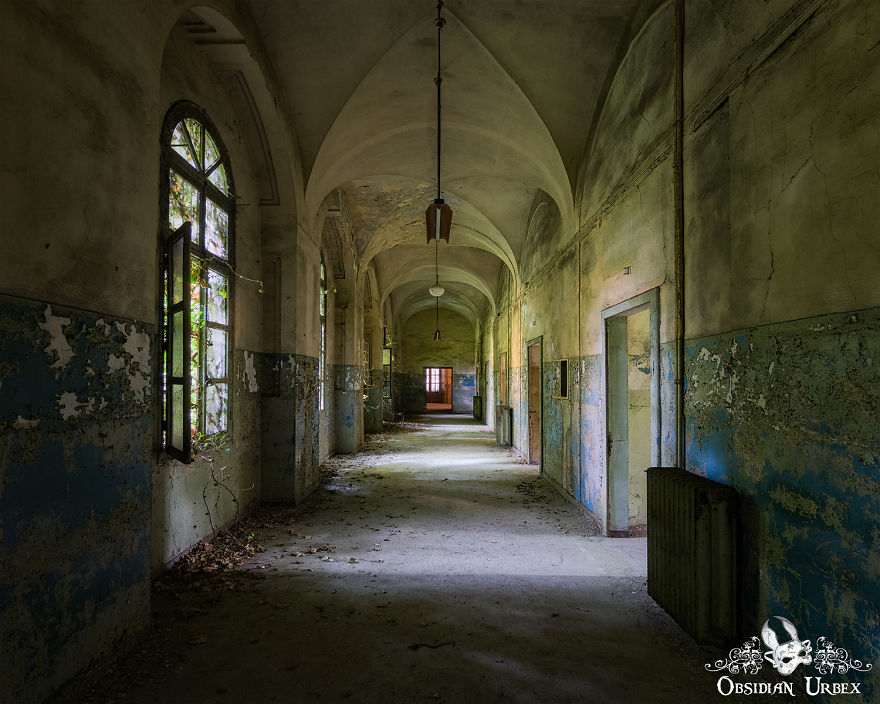
Accrding to a photographer Janine Pendleton: “I traveled to northern Italy in the summer of 2018. A summer road trip filled with awesome memories. I zig-zagged across the country, following our map chaotically littered with pins. Each pin highlighted an abandoned place.
I arrived at one pin late in the afternoon, perhaps a little too late. I was too excited to wait, so I crawled in through to a tiny opening as soon as we saw it.
I was standing at the entrance of an old Italian insane asylum. These relics are from a darker time where mental health was poorly understood. The patients were called “mentecatti”, a derogatory term equating to “half-wit” or “imbecile”. They were locked up in these rural hospitals called “manicomio”, which translates as “madhouse”. Out of sight, and out of mind. I was not alone though, I had two friends with me. As the daylight was beginning to fade, we all split up and began shooting.
Time was of the essence! The asylum was a maze of corridors and had several floors. I searched frantically to find all the important locations; the examination room, record office, the body slab, and so on. I traveled the halls and corridors alone checking every room and corner. Constantly aware of the darkness encroaching.
We re-convened at the entry point, just as the last of the light faded.”
More: Obsidian Urbex Photography h/t: boredpanda
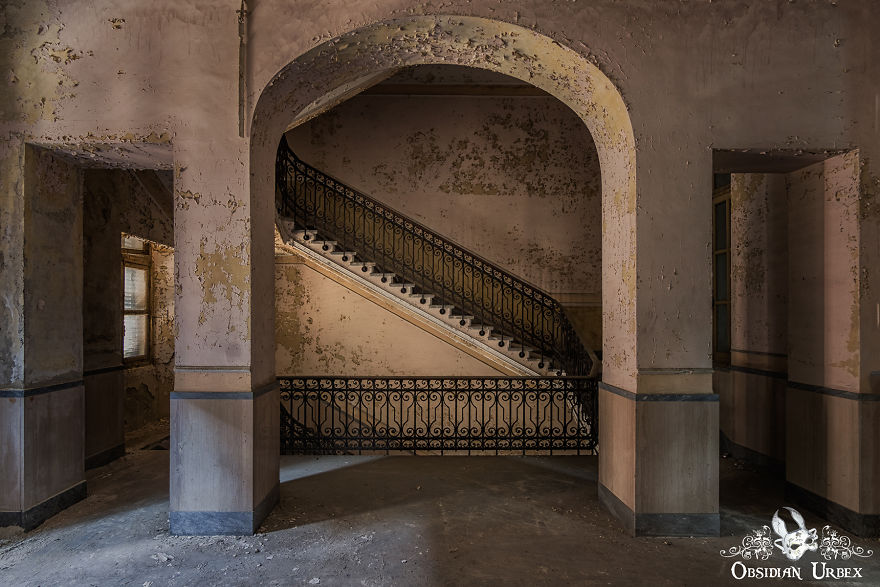
Manicomio di R is a former Neuropsychiatric hospital (Ospedale neuropsichiatrico). These establishments are also called an insane asylum or mental hospital. We visted this location in the summer of 2018, during our Italian Road Trip.
The term “manicomio” translates to “madhouse”. The manicomio persisted until late 20th Century. This was a time when attitudes towards mental health patient care changed.
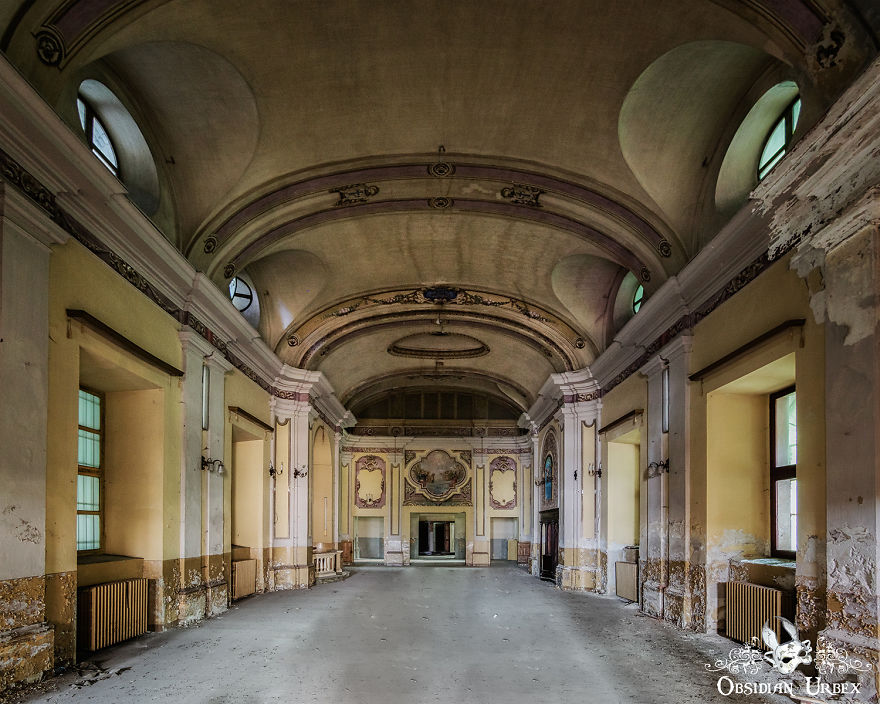
This hospital opened in the 1870’s. The complex was built on the site of a former military college. The college had previously been a charitable hospital for the poor. A year after opening, the institution housed 230 patients, rising to 400 near the end of the 19th Century.
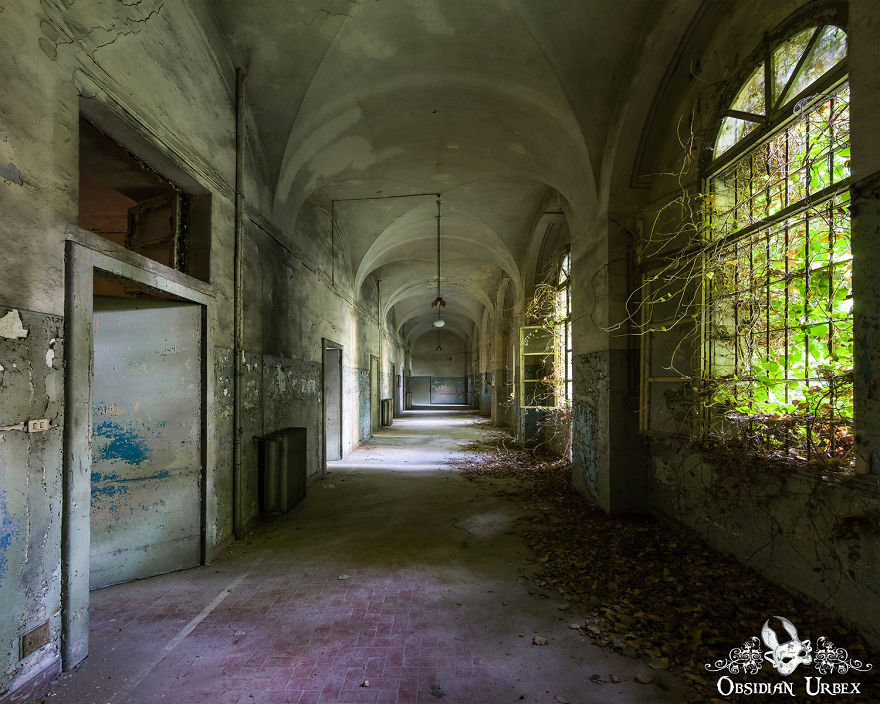
The medical facility housed the “mentecatti“, a term derogatory by modern standards. It meant “half-wit” or “imbecile”. Manicomio di R catered for a wide range of mental disorders. These ranged from dangerously violent maladies, to elderly suffering from dementia. In the early days of operation, there was little to no segregation of this wide spectrum of patients.
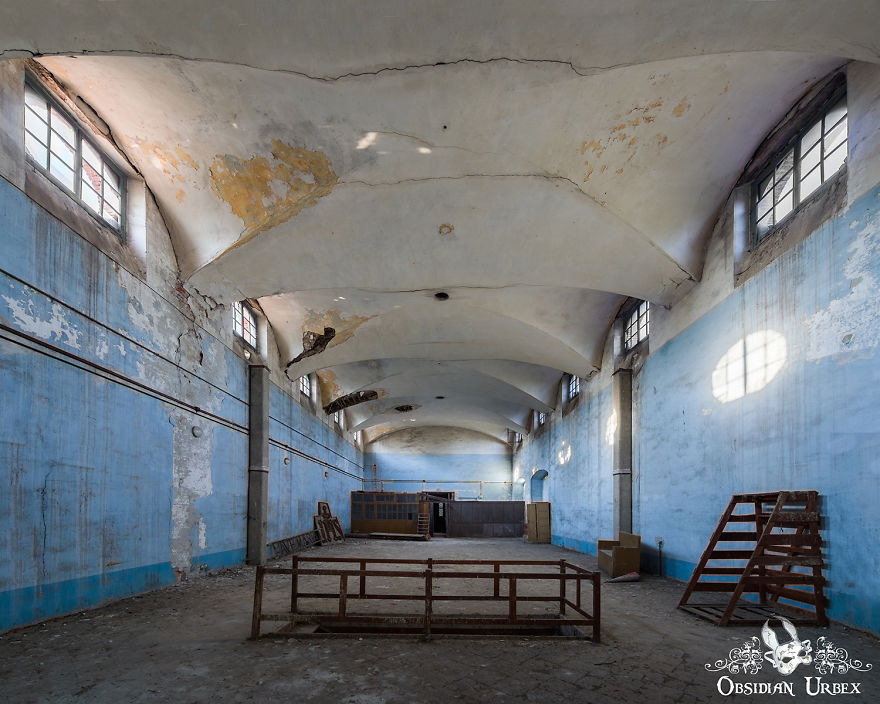
In the early 20th century changes in Italian law caused a reorganisation within the hospital. A new law stated that “dangerous madmen” had to be interred separately. Once again the hospital underwent expansion. The hospital was now able to accommodate 600 patients.
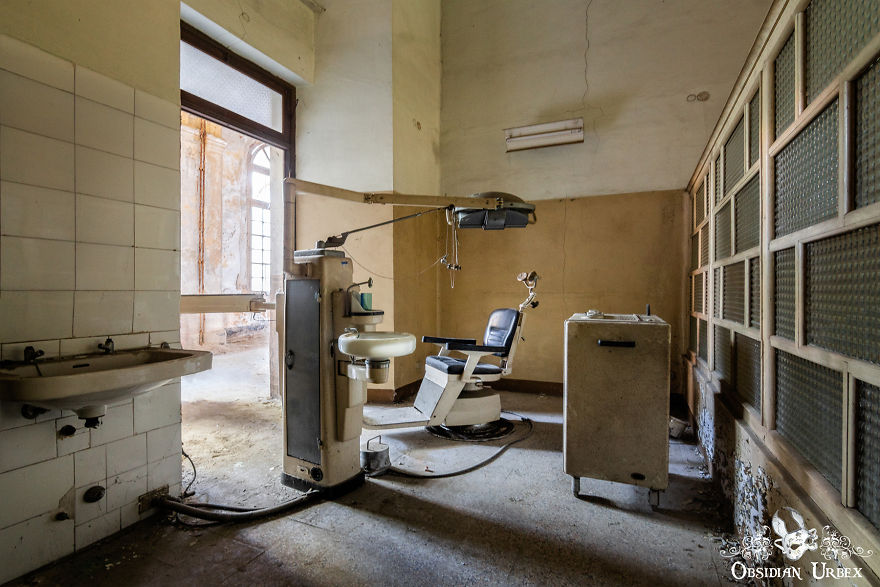
Further changes in Italian law pertaining to treatment facilities and segregating of male and female patients drove further expansion in the 1950’s and 1970’s. At this time the hospital had eight departments spread over several large pavilions. The sprawling site now covered 10 thousand square meters and including a large enclosed park.

The quiet men (“Marro”) and quiet women (“Tamburini”) were now housed in separate pavilions. Conversely, the dangerous or “acute” patients resided in a ward with separate containment cells. The new and improved departments now included; a clinical research laboratory, radiology suite, electrotherapy treatment rooms, dentists office and an operating room. There was also an on-site chapel.
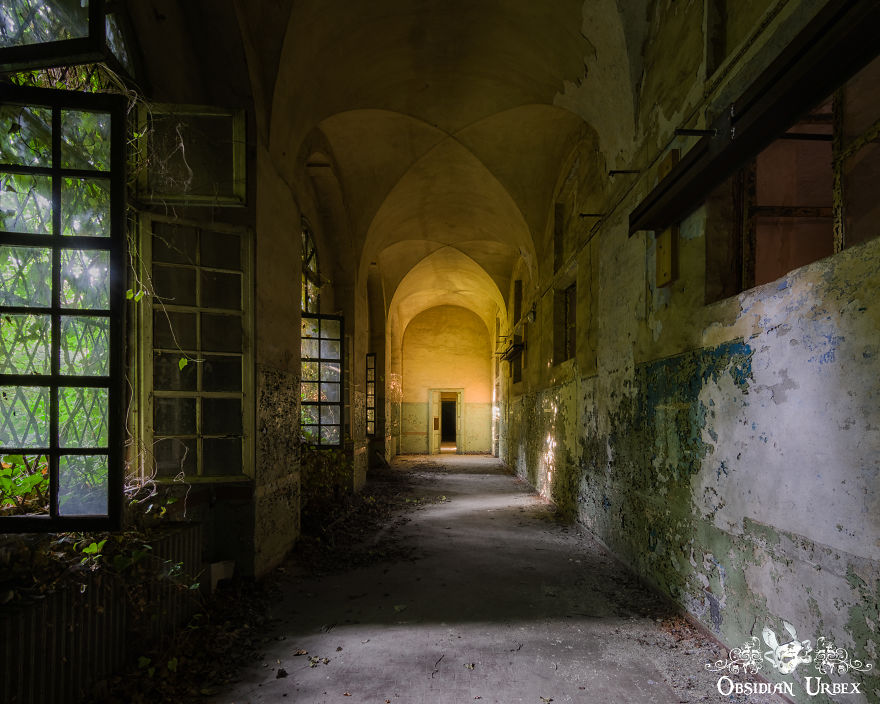
Finally, the Italian national health system was introduced in the 1908s. The new laws abolished the archaic asylums. This signalled the end of these traditional “madhouses”. Manicomio di R joined the other medical relics all over Italy in closure. There were around 900 patients when the laws decreeing closure of all “madhouses” were passed.
The decaying remnants of these ancient institutes still little the Italian countryside. A sombre reminder of a darker time in medical history.
